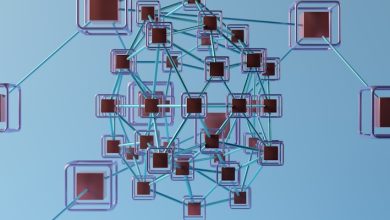The Role of Decentralized Ecosystems in Disaster Relief

- Understanding the concept of decentralized ecosystems
- The advantages of decentralized systems in disaster relief efforts
- Case studies of successful decentralized disaster relief initiatives
- Challenges faced by decentralized ecosystems in disaster relief
- The potential for blockchain technology in improving disaster response
- Collaboration between centralized and decentralized systems in disaster relief
Understanding the concept of decentralized ecosystems
Decentralized ecosystems refer to networks or platforms where power and decision-making are distributed among various nodes rather than being centralized in a single entity. In the context of disaster relief, decentralized ecosystems play a crucial role in ensuring efficient and effective response efforts. By utilizing blockchain technology, decentralized ecosystems enable faster and more transparent transactions, thereby facilitating the flow of resources to areas in need.
One key aspect of decentralized ecosystems is their ability to harness the collective power of a diverse group of stakeholders. By allowing for peer-to-peer interactions and collaborations, these ecosystems can leverage the expertise and resources of individuals and organizations from around the world. This decentralized approach not only promotes inclusivity and diversity but also fosters innovation and creativity in problem-solving.
Moreover, decentralized ecosystems are inherently resilient and adaptive. In the face of disasters, centralized systems may be vulnerable to disruptions or failures. In contrast, decentralized ecosystems are designed to withstand shocks and continue functioning even in adverse conditions. This resilience is critical in disaster relief efforts, where quick and reliable access to resources can mean the difference between life and death.
Overall, understanding the concept of decentralized ecosystems is essential for maximizing their potential in disaster relief. By embracing decentralized networks and platforms, humanitarian organizations and governments can enhance their response capabilities and better serve communities in crisis. As we continue to navigate an increasingly complex and unpredictable world, decentralized ecosystems offer a promising solution for building more resilient and sustainable disaster response systems.
The advantages of decentralized systems in disaster relief efforts
Decentralized systems play a crucial role in disaster relief efforts due to their numerous advantages. One key benefit is the ability to distribute resources more efficiently. Instead of relying on a central authority to coordinate all relief activities, decentralized ecosystems allow for multiple organizations and individuals to contribute and collaborate in a streamlined manner.
Another advantage of decentralized systems is their resilience in the face of infrastructure damage. When a disaster strikes, centralized systems are often prone to failure, hindering the delivery of aid. In contrast, decentralized networks can adapt to changing conditions and continue to function even when traditional communication channels are disrupted.
Furthermore, decentralized systems promote transparency and accountability in disaster relief operations. By utilizing blockchain technology, for example, transactions and data can be securely recorded and verified, reducing the risk of fraud and ensuring that resources reach those in need.
Overall, the decentralized nature of these systems allows for faster response times, increased collaboration, and improved efficiency in disaster relief efforts. By harnessing the power of distributed networks, we can better address the challenges posed by natural disasters and humanitarian crises.
Case studies of successful decentralized disaster relief initiatives
There have been numerous successful decentralized disaster relief initiatives that have showcased the power of community-driven efforts in times of crisis. These case studies highlight the effectiveness of decentralized ecosystems in providing timely and efficient aid to those in need.
- One such initiative was seen in the aftermath of Hurricane Maria in Puerto Rico, where local communities banded together to coordinate relief efforts. Through decentralized networks, volunteers were able to quickly distribute food, water, and medical supplies to those affected by the disaster.
- In another case, the use of blockchain technology played a crucial role in facilitating decentralized disaster relief in the Philippines after Typhoon Haiyan. By leveraging smart contracts and digital identities, aid organizations were able to efficiently track and verify the delivery of resources to affected areas.
- Additionally, during the earthquake in Nepal, decentralized platforms enabled individuals from around the world to donate directly to local relief efforts. This direct peer-to-peer support bypassed traditional intermediaries, ensuring that resources reached those in need more quickly.
These case studies illustrate the importance of decentralized ecosystems in disaster relief efforts. By harnessing the power of community collaboration, technology, and innovation, decentralized initiatives have proven to be effective in providing timely and targeted assistance to disaster-stricken regions.
Challenges faced by decentralized ecosystems in disaster relief
One of the challenges faced by decentralized ecosystems in disaster relief is the lack of centralized coordination. When multiple organizations and individuals are involved in relief efforts, it can be difficult to ensure that resources are being allocated efficiently and effectively. This lack of coordination can lead to duplication of efforts, wasted resources, and confusion among those in need of assistance.
Another challenge is the issue of scalability. Decentralized ecosystems are often designed to be flexible and adaptable, which is beneficial in many situations. However, when faced with a large-scale disaster, these systems may struggle to handle the increased demand for services and support. This can result in delays in response times, overwhelmed volunteers, and a lack of resources available to those affected by the disaster.
Additionally, decentralized ecosystems may face challenges related to funding and sustainability. Without a centralized funding source or organizational structure, it can be difficult to secure the financial support needed to maintain operations over the long term. This can make it challenging to provide consistent and reliable aid to those in need, especially in the aftermath of a disaster when resources may be stretched thin.
Overall, while decentralized ecosystems have the potential to play a valuable role in disaster relief efforts, they also face a number of challenges that must be addressed in order to maximize their impact. By addressing issues such as coordination, scalability, funding, and sustainability, decentralized ecosystems can become more effective and efficient in providing aid to those affected by disasters.
The potential for blockchain technology in improving disaster response
Blockchain technology has shown great potential in improving disaster response efforts by providing a decentralized and transparent platform for coordinating resources and information. By utilizing blockchain, organizations can streamline the distribution of aid, track donations, and ensure accountability throughout the relief process.
One of the key benefits of blockchain technology in disaster relief is its ability to create a secure and immutable record of transactions. This can help prevent fraud and ensure that donations reach those in need quickly and efficiently. Additionally, blockchain can enable real-time tracking of supplies and resources, allowing organizations to better coordinate their efforts and respond to emergencies more effectively.
Furthermore, blockchain technology can also help address challenges related to data management and interoperability during disaster response. By providing a decentralized and standardized platform for data sharing, blockchain can facilitate communication and collaboration between different organizations and stakeholders involved in relief efforts.
Collaboration between centralized and decentralized systems in disaster relief
Collaboration between centralized and decentralized systems is crucial in disaster relief efforts. Centralized systems, such as government agencies and large non-profit organizations, often have the resources and infrastructure needed to respond quickly to disasters. On the other hand, decentralized systems, such as local community groups and blockchain-based platforms, can provide valuable real-time information and grassroots support.
By working together, centralized and decentralized systems can complement each other’s strengths and weaknesses. Centralized systems can coordinate large-scale relief efforts, distribute resources efficiently, and provide overall leadership. Meanwhile, decentralized systems can leverage local knowledge and networks to reach remote areas, mobilize volunteers effectively, and gather data on the ground.
One example of successful collaboration between centralized and decentralized systems is the use of blockchain technology in disaster relief. Blockchain platforms can provide transparent and secure transactions, streamline supply chain management, and enable peer-to-peer donations. When integrated with centralized systems, blockchain technology can enhance the efficiency and accountability of relief operations.



